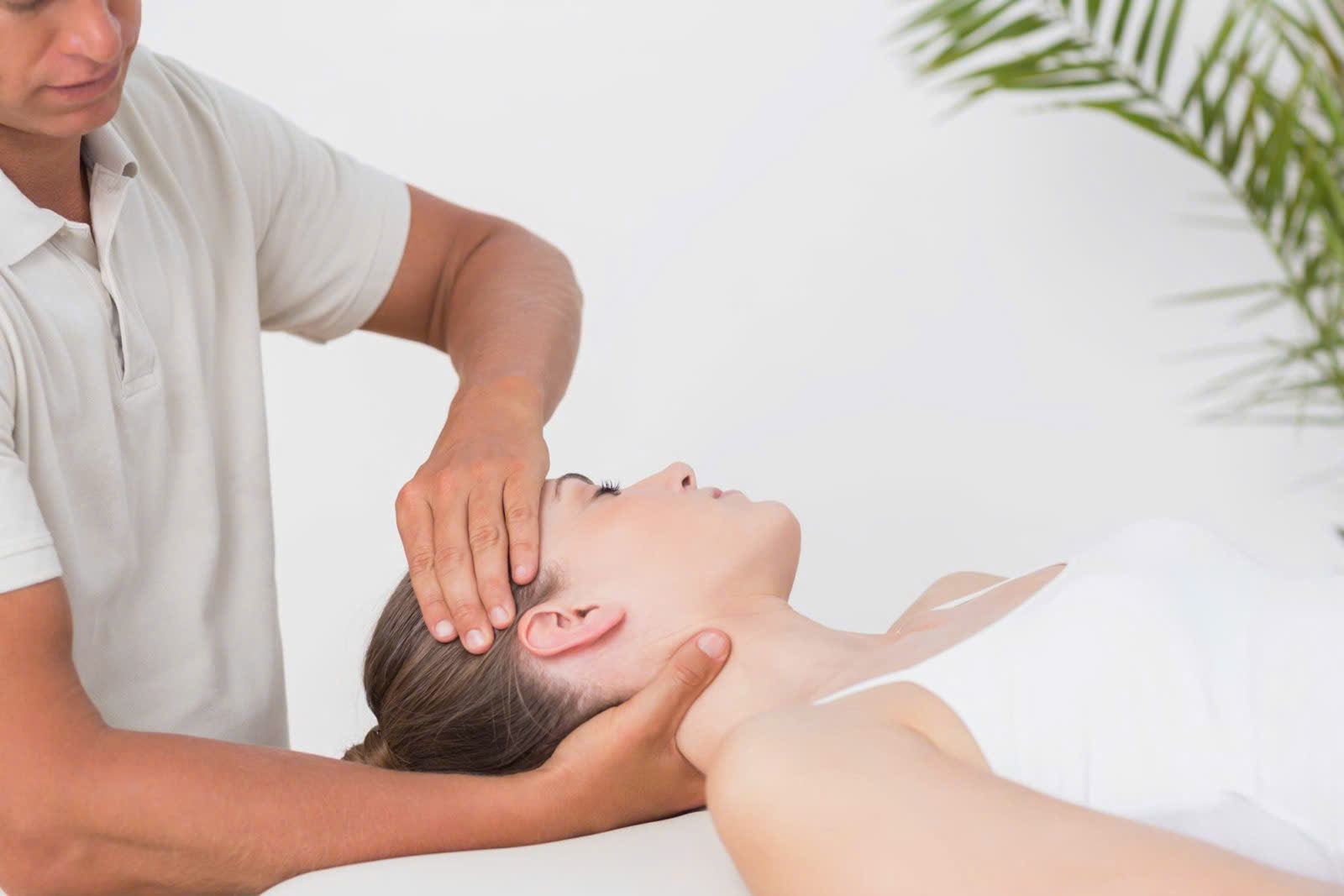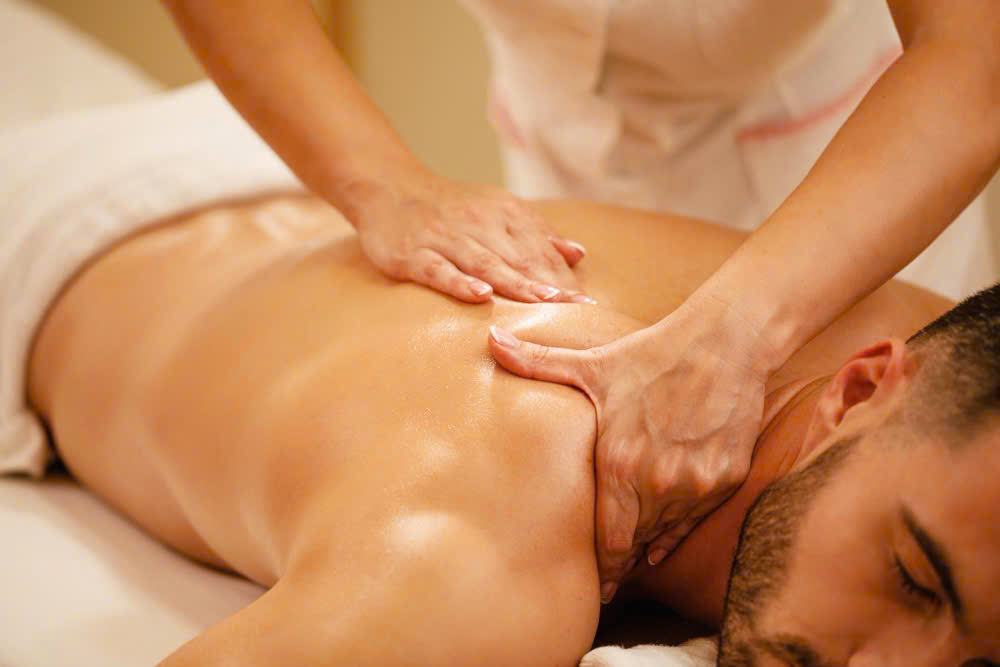6 Types of massage that can help relieve back and neck pain
When it comes to managing discomfort within your body, one of the most effective natural approaches is massage therapy. There are many types of massage designed specifically to address various ailments, including persistent back and neck pain. Understanding what the reason make your body feel pain is crucial before choosing the right technique. This comprehensive guide explores the types of massage that can help relieve back and neck pain, examines the root causes of physical discomfort, and provides expert advice on how to choose which types of massage suitable for you. Whether you’re seeking relaxation or targeted pain relief, this article will help you navigate the complex world of massage therapy with clarity and confidence.

Types of massage
Massage therapy is a vast field comprising numerous techniques developed over centuries around the globe. Each method serves specific purposes—some aim to relax and rejuvenate, while others target deep muscle layers or stimulate energy flow. Before delving into types of massage that can help relieve back and neck pain, it’s essential to familiarize yourself with the general spectrum of massages available. This foundational knowledge not only enriches your understanding but also empowers you to make an informed decision tailored to your unique needs.
Swedish Massage
Swedish massage is arguably the most well-known and widely practiced form of massage therapy globally.
This gentle yet effective technique primarily focuses on promoting relaxation by using long, flowing strokes, kneading, circular movements, vibration, and tapping. The primary goal is to improve blood circulation and encourage total-body relaxation, which can indirectly reduce mild back and neck tension caused by stress and anxiety.
One of the key benefits of Swedish massage lies in its ability to calm the nervous system. Stress often manifests physically through muscle tightness, shallow breathing, and increased heart rate—all of which contribute to discomfort. Swedish massage helps mitigate these responses, leading to a state of deep relaxation. From a personal viewpoint, I find Swedish massage ideal for those new to massage therapy or individuals looking to unwind without targeting any acute pain points.
Furthermore, because of its soothing nature, Swedish massage acts as an excellent introduction to more intensive therapies. It gently prepares the muscles and soft tissues for deeper work later on, making it a fundamental building block in the landscape of types of massage.
Deep Tissue Massage
Deep tissue massage goes beyond surface-level relaxation, targeting the deeper layers of muscle and connective tissues.
This technique involves slower, more forceful strokes aimed at breaking down adhesions, relieving knots, and improving mobility. Often recommended for chronic pain sufferers, athletes, or those experiencing severe stiffness, deep tissue massage directly addresses musculoskeletal issues contributing to back and neck pain.
While some might find it slightly uncomfortable during the session due to its intensity, the long-term benefits often outweigh temporary discomfort. Personally, I see deep tissue massage as a powerful tool for tackling persistent tension rooted in lifestyle habits such as poor posture or repetitive movements. It’s particularly beneficial when pain originates from structural imbalances rather than mere stress.
It’s important, however, to communicate openly with your therapist about pressure tolerance to avoid unnecessary soreness. Despite its rigor, a well-executed deep tissue massage can significantly enhance flexibility and reduce inflammation, making it a cornerstone among the types of massage that can help relieve back and neck pain.
Sports Massage
Developed initially to help athletes prepare for events and recover afterward, sports massage incorporates techniques similar to Swedish and deep tissue massages but with a focus on areas related to specific sport activities.
Sports massage targets muscle groups heavily utilized during athletic pursuits. It often combines stretching, compression, friction, and trigger point therapy to prevent injuries, improve performance, and accelerate recovery. Even non-athletes with localized muscular stress or repetitive strain injuries can greatly benefit from this approach.
In my experience, sports massage is highly adaptable. Therapists tailor each session based on the client’s activity levels, muscle condition, and pain points. If your back and neck pain stem from physical exertion or repetitive movement (like working at a computer all day mimicking athletic strain), sports massage may be surprisingly effective.
Its versatility and targeted effectiveness place it firmly within the types of massage that can help relieve back and neck pain, especially when musculoskeletal strain is the underlying cause.
Trigger Point Therapy
Trigger point therapy zeroes in on hyperirritable spots within muscles—commonly known as “knots.”
These points can refer pain elsewhere in the body and contribute to widespread discomfort. By applying focused pressure to these knots, therapists aim to deactivate the trigger points and alleviate both local and referred pain.
The precision involved makes trigger point therapy distinct from other modalities. Clients often report a sensation of “good pain,” followed by significant relief. It requires a delicate balance between applied pressure and patient feedback, making open communication essential.
From my perspective, trigger point therapy shines when pain is localized or stubbornly resistant to broader massage techniques. It’s an invaluable addition to the range of types of massage that can help relieve back and neck pain, especially if your discomfort seems to radiate unpredictably.

What the reason make your body feel pain
Pain is a complex physiological and psychological phenomenon influenced by numerous factors. When addressing conditions like back and neck pain, it’s crucial to understand what the reason make your body feel pain to select the most effective treatment strategy. Pain can originate from mechanical issues, emotional states, or even systemic illnesses. Let’s delve into some of the main reasons behind bodily discomfort.
Muscle Imbalances and Poor Posture
One of the most common sources of back and neck pain stems from muscle imbalances and improper posture.
Modern lifestyles often involve prolonged sitting, excessive screen time, and limited movement, which can cause certain muscle groups to weaken while others become overactive. For instance, slouching at a desk tightens chest muscles and weakens upper back muscles, leading to strain in the neck and shoulders.
Over time, these imbalances alter spinal alignment and place uneven stress on joints and ligaments. This chronic misuse results in fatigue, inflammation, and eventually pain. From personal observation, many people underestimate the cumulative effect of daily habits on their musculoskeletal health. Correcting posture and rebalancing muscles can drastically reduce discomfort and complement manual therapies.
Early intervention through ergonomic adjustments, postural training, and appropriate exercise remains pivotal. When combined with targeted massage therapy, these strategies can break the cycle of compensation and pain, highlighting the importance of knowing what the reason make your body feel pain at a fundamental level.
Emotional Stress and Psychological Factors
Emotional states profoundly influence how we perceive and experience pain.
Stress increases cortisol production, triggering a cascade of physiological responses such as muscle tension, elevated heart rate, and reduced immune function. This “fight or flight” mechanism, while useful in emergencies, becomes harmful when chronically activated. Tightened muscles in the neck, shoulders, and back are common somatic expressions of unresolved emotional stress.
Anxiety and depression can also amplify pain perception by lowering pain thresholds and increasing the likelihood of chronic pain syndromes. Personally, I’ve found that incorporating mind-body approaches alongside massage yields superior outcomes for clients whose pain has emotional components.
Recognizing the interplay between mind and body is essential to addressing what the reason make your body feel pain holistically. Techniques like mindfulness, breathwork, and cognitive behavioral therapy can synergize with massage to promote both emotional and physical healing.
Injury, Trauma, and Overuse
Acute injuries such as sprains, strains, or accidents are straightforward causes of pain.
Even minor trauma can lead to inflammation, swelling, and impaired mobility, resulting in localized discomfort. However, repeated microtrauma from overuse—such as repetitive lifting, poor lifting mechanics, or prolonged static positions—can be equally damaging over time.
These injuries create scar tissue and adhesions that disrupt normal muscle function. Without proper rehabilitation, compensatory patterns develop, contributing to persistent back and neck pain. In my professional experience, addressing these issues early with appropriate manual therapy and exercise interventions offers the best chance for full recovery.
Understanding what the reason make your body feel pain in relation to injury emphasizes the need for a personalized approach. A thorough assessment can reveal whether pain arises from recent trauma or accumulated overuse, guiding the selection of suitable massage techniques.
Degenerative and Structural Conditions
Lastly, structural changes and degenerative diseases play a significant role in chronic pain.
Conditions like osteoarthritis, herniated discs, spinal stenosis, and scoliosis alter the integrity of the spine and surrounding tissues. These changes can impinge nerves, restrict movement, and cause inflammation, resulting in debilitating pain.
While massage cannot reverse structural damage, it can significantly improve quality of life by reducing muscle guarding, enhancing circulation, and alleviating secondary muscular pain. Regular therapy sessions, combined with medical management, offer a holistic strategy for coping with chronic conditions.
From a personal standpoint, recognizing when pain is linked to irreversible anatomical changes reframes therapeutic goals—from cure to management. This nuanced understanding of what the reason make your body feel pain ensures realistic expectations and optimal care pathways.
Types of massage that can help relieve back and neck pain
Among the myriad types of massage, several stand out as particularly effective for alleviating back and neck discomfort. Selecting the appropriate method hinges on understanding the origin and nature of your pain. Below, we explore specialized techniques renowned for their efficacy in managing spinal and cervical ailments.
Myofascial Release
Myofascial release focuses on the fascia—the connective tissue encasing muscles and organs.
Restrictions or adhesions within this network can limit mobility and cause significant pain. Therapists employ gentle, sustained pressure to stretch and elongate the fascia, restoring its natural elasticity and alleviating tension throughout the affected areas.
Unlike more aggressive techniques, myofascial release requires patience and subtle adjustments. Sessions can last longer but tend to produce profound, lasting effects. In my experience, clients with chronic neck stiffness or diffuse back aches often respond exceptionally well, as fascial restrictions frequently underlie these symptoms.
Incorporating this method offers a unique advantage within types of massage that can help relieve back and neck pain by directly addressing connective tissue health—a factor sometimes overlooked in conventional treatments.
Shiatsu
Shiatsu is a Japanese modality rooted in traditional Chinese medicine principles of balancing energy, or Qi.
By applying finger pressure to specific acupressure points along meridians, shiatsu aims to restore energetic harmony, reduce tension, and promote overall well-being. Sessions can include stretching and joint mobilization, providing a multi-layered approach to pain relief.
While it might seem less “medical” compared to Western techniques, shiatsu offers remarkable benefits, especially for stress-related back and neck issues where muscle tension intertwines with emotional factors. From my perspective, integrating Eastern philosophies adds depth to understanding pain, emphasizing holistic healing.
For those interested in a gentler, spiritually attuned option, shiatsu stands out among types of massage that can help relieve back and neck pain, uniting physical relief with energetic balance.
Thai Massage
Thai massage blends assisted yoga-like stretches with rhythmic compression along energy lines (Sen).
Practiced fully clothed on a mat, it actively engages the receiver through movement rather than passive manipulation. This unique dynamic helps increase flexibility, reduce muscle tension, and improve joint mobility, making it highly effective for spinal issues.
Clients often report feeling taller, more aligned, and deeply invigorated after a session. Personally, I view Thai massage as a middle ground between stretching exercises and traditional massage—ideal for those who enjoy interactive, movement-based therapies.
Its comprehensive approach places it firmly within the types of massage that can help relieve back and neck pain, especially when tightness is compounded by limited range of motion or sedentary habits.

Craniosacral Therapy
Craniosacral therapy is a gentle, non-invasive technique focusing on the craniosacral system—the membranes and fluids surrounding the brain and spinal cord.
Therapists use light touch to identify and correct imbalances, facilitating the body’s natural healing processes. Though subtle, this approach can profoundly affect pain levels, nervous system regulation, and overall well-being.
In cases where back and neck pain have neurological components or are exacerbated by stress, craniosacral therapy offers a calming, restorative alternative. From my analysis, it’s particularly suited for sensitive individuals or those who prefer minimal physical intervention.
Incorporating craniosacral therapy into your wellness routine diversifies the types of massage that can help relieve back and neck pain, targeting the nervous system as well as musculoskeletal structures.
How to choose which types of massage suitable for you.
With so many options available, selecting the right types of massage for your specific situation can feel overwhelming. The key lies in assessing your pain characteristics, personal preferences, and health objectives. Here’s a detailed exploration of how to choose which types of massage suitable for you to ensure a safe, satisfying experience.
Assess Your Pain Type and Severity
Begin by identifying the nature and source of your discomfort.
Is your pain acute or chronic? Localized or widespread? Does it worsen with movement or rest? Determining these details helps narrow down the most effective techniques. For example, acute injuries may benefit more from gentle modalities like Swedish or craniosacral therapy, whereas chronic muscular knots respond better to deep tissue or trigger point work.
Listening to your body’s signals is vital. Pushing too hard with intense techniques during an acute flare-up can exacerbate symptoms. Conversely, mild massages might be insufficient for longstanding muscle tension. From personal insight, matching therapy intensity with pain severity is a balancing act crucial to successful outcomes.
Understanding how to choose which types of massage suitable for you starts with honest self-reflection and clear communication with your therapist.
Consider Your Personal Comfort and Preferences
Beyond clinical factors, your comfort preferences play a significant role.
Do you enjoy firm pressure or gentle touch? Prefer remaining clothed (as in Thai massage) or don’t mind undressing? Are you looking for pure relaxation, emotional release, or targeted pain relief? Clarifying these aspects refines your choices.
Cultural influences and past experiences also shape preferences. Some individuals resonate better with Eastern modalities like shiatsu, appreciating their holistic approach. Others might favor clinical techniques grounded in Western anatomy. Personally, I believe the best results arise when technique aligns harmoniously with individual comfort zones.
Ultimately, how to choose which types of massage suitable for you involves honoring your instincts alongside professional recommendations.
Evaluate Therapist Experience and Specializations
Not all therapists possess equal expertise across different modalities.
Some specialize in clinical rehabilitation, while others excel in energy work or spa treatments. Research therapist qualifications, certifications, and experience with conditions similar to yours. Don’t hesitate to ask questions regarding their familiarity with back and neck pain cases.
Building trust and rapport enhances treatment efficacy. A skilled therapist tailors sessions dynamically based on your feedback, adjusting pressure, focus areas, and techniques accordingly. Personally, I recommend scheduling an initial consultation or trial session to assess compatibility.
Knowing how to choose which types of massage suitable for you thus extends to selecting the right practitioner—not just the method.
Integrate Other Lifestyle and Medical Considerations
Finally, integrate your broader health context into your massage plan.
Pregnancy, osteoporosis, cardiovascular issues, or recent surgeries may contraindicate certain techniques. Always disclose your medical history to avoid adverse effects. Additionally, combine massage with complementary approaches like exercise, ergonomic adjustments, stress management, and medical care for holistic healing.
Approaching pain from multiple angles often yields superior results. From an integrative viewpoint, massage should serve as part of a larger self-care framework rather than a standalone solution.
This multi-dimensional perspective encapsulates how to choose which types of massage suitable for you, fostering an individualized, sustainable path toward relief and well-being.

Conclusion
Navigating the intricate world of types of massage can empower you to find effective, natural solutions for back and neck discomfort. Understanding what the reason make your body feel pain provides critical insights that inform your choice of therapy. From relaxing Swedish and Thai massages to targeted deep tissue and craniosacral techniques, numerous types of massage that can help relieve back and neck pain await exploration.https://jobedubaispa.com/reductive-mesotherapy-massage/
Crucially, knowing how to choose which types of massage suitable for you ensures safety, satisfaction, and lasting results. Pairing your body awareness with professional guidance unlocks the full potential of massage therapy. Ultimately, adopting an informed, holistic approach transforms massage from a simple luxury into a vital component of your health journey, fostering resilience, relaxation, and relief see the spa location here .https://maps.app.goo.gl/2gfYPJNYythhZesU6?g_st=com.google.maps.preview.copy
